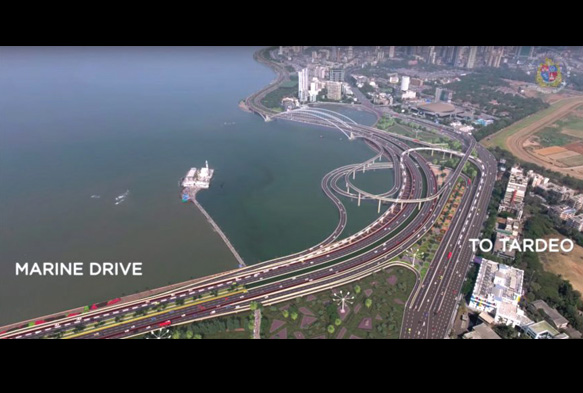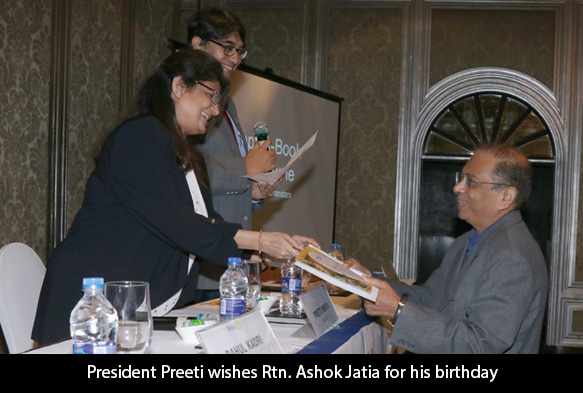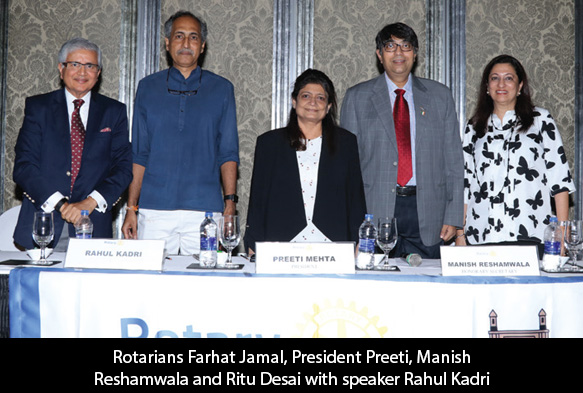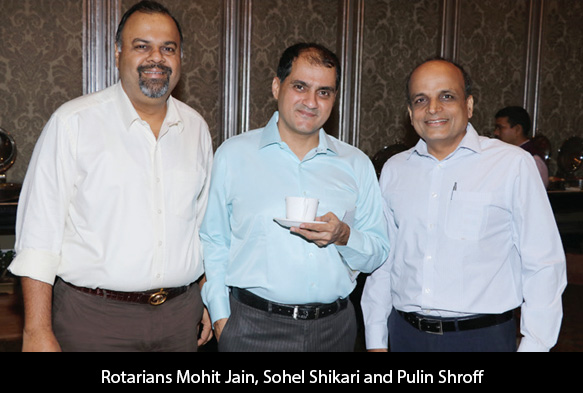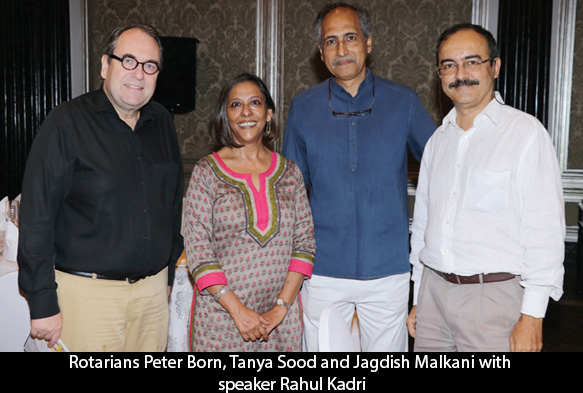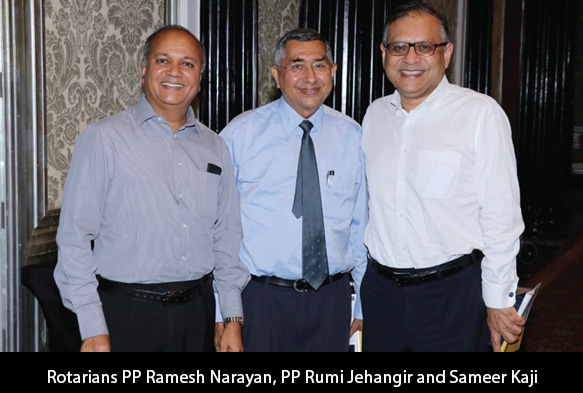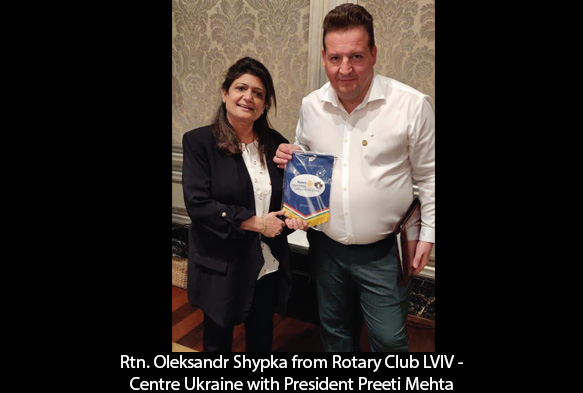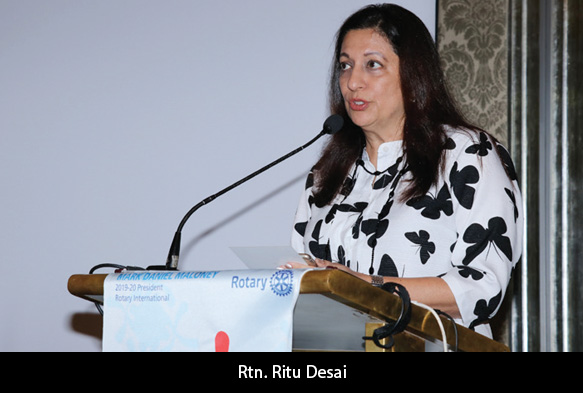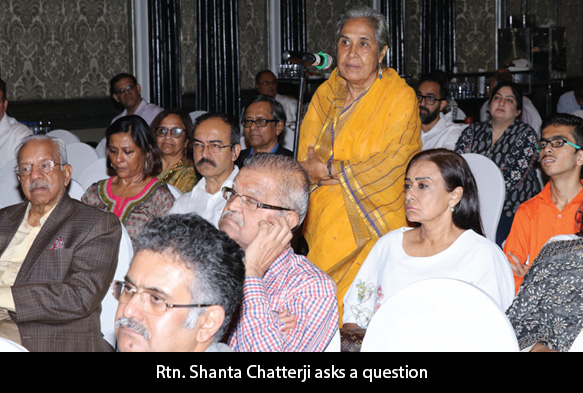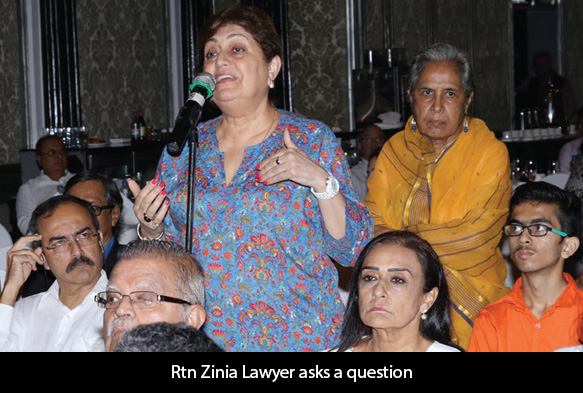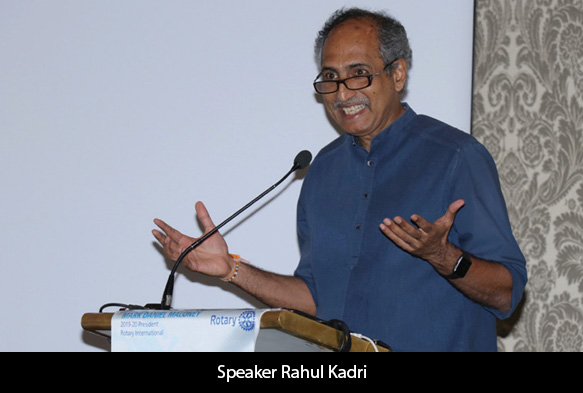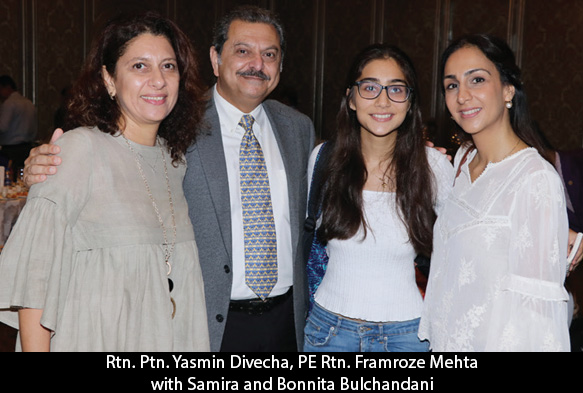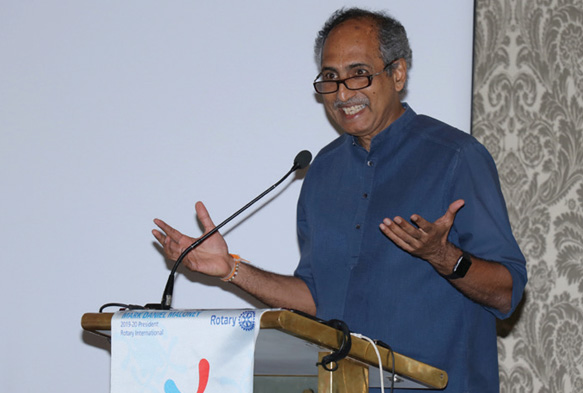
A Road Awakening
Architect Rahul Kadri who spoke to Rotarians at the last Tuesday meeting emphasized that the needs of the many must outweigh development decisions that benefit a few
SIX PILs were filed against Mumbai’s Coastal Road development. Architect Rahul Kadri visited the Rotary Club of Bombay on September 3, 2019, and spoke about the plan and some alternatives.
“Six PILs were filed as per the Coastal Road is concerned and the Bombay High Court found that the work and many serious procedures were not followed in accordance with the law of the country. The High Court has stopped work until requisite permissions have been got. That is where the project is now – it has been declared illegal. It has not got the environmental clearance that it needs, has violated the Wildlife Act of India and ignored a lot of issues mentioned in the Wildlife Act. Fortunately, as a country, we believe in system, and things are connected: if you do something at one end it affects the other end. We have acts like the Wildlife Act, Environmental Act which acknowledge this systematic approach that the country believes in.”
On the other hand, one hears citizens ask what is wrong with reclamation? Rahul reminded Rotarians that a law has been passed banning reclamation in the city. He says, “After Nariman Point and Cuffe Parade were reclaimed, they understood their mistakes. Reclamation in the south actually affected Juhu beach. When I was very young, Juhu beach was a very deep beach. If you go there now, it is less than one-third of that depth. Reclamation done for the Bandra-Worli Sea Link at the mouth of the Mithi river affected Dadar beach – it has almost disappeared. So, when you reclaim, it affects tidal movements.”
“One of the things the High Court said was that adequate studies had not been done to show the tidal movements or how the fish spawn. The 38 km of length has a lot of rocky shore suitable for the fish to spawn. So, a lot of fish that we get, which can be caught in the deep sea, is actually spawned on the shore. So pomfret, bombay duck, red snapper and rawas – a lot of their eggs are spawned on the shore. They live deeper but they come in and they go out. That is also why, in the month of May and June, no fishing is allowed and the mother is actually allowed to spawn and go back. That is an overview of the HC order and why the work has been stopped.”
“Speaking of transportation, let me use the analogy of human beings as packets of energy, arteries as transportation networks and our organs as places of work. For an artery to remain clean, you need to take ensure your triglyceride levels are not too high; they are the ones that clot the arteries. But we love to eat simple sugar which is the problem. Likewise, the simple sugar that clogs the arteries – the transportation network in a city – is the private car.”
“We love private cars but they are the sugar of the transportation network; you can have it but you need to restrict it. The car occupies maximum amount of space in comparison to public transport. A minibus occupies 17 metre of the road. If that bus is full, with 30 people, what happens when you take those 30 people and put them into cars? It is going to occupy 250 metre. That is the amount of bloat. So when we say that there is a traffic problem. It is the cars that are the problem.”
“If we think in terms of system, even in the bloodstream, they are now saying that fats give you energy slowly and they are fairly dense. So they are most efficient carriers of energy. Similarly, if we talk about the system of transportation, there are five ways people take – walk, take the bus, take local trains, BEST bus, and then there are private cars.”
“Does anyone know how many people walk to work? 50 per cent! It is government verified data. Why is it so high? In older parts of the city, where they have shops or workshops, they are right there. Your driver, house-help might live nearby. So Bombay is healthy, in that sense. Next is local trains, 22-25 per cent, followed by 10-12 per cent on BEST buses. It keeps fluctuating. It had gone down but after the ticket prices being reduced, it has doubled in the last six weeks. Private cars have increased from 3 per cent to 6 per cent. Shared cabs have come up.
Bikes have increased. So bikes constitute about 1 per cent. Cycles are at about a half per cent.”
“So, what is going to change? About 80 lakh people travel by train everyday. The metro is going to change everything. It is going to come alive in the next two to three years and revolutionise the way we commute because it is going to get 20 lakh seats into the system. Unfortunately, the metro is a slightly expensive way of travelling and is also modern and air-conditioned. So, the price is going to be higher. People using the bus or local may not switch but
people going by 1st class in local trains or AC trains can. Metro 3 alone is going to have, in the first phase, 14 lakh seats and in the next phase 17 lakh seats. It is going to be from Cuffe Parade to Seepz and for the first time there are going to be stations at areas not connected by local trains (Worli, Cuffe parade, BKC, Nariman point, Airport, Seepz).”
“A government report says, that of the 14 lakh seats, 4 lakh are going to be of people switching from car to metro. It is very likely to happen because the areas that the metro connects to serve about 30 million people. So it is of very well planned and going through the densely populated areas of the city. Even a slight shift is going to be a huge change on the road. It is going to free 30 percent of road space. Keeping that in mind and comparing what a public transport does and what a coastal road does, the coastal road is the most expensive road ever built in the history of humankind. It will cost Rs 1300 crore per kilometre. It is a complete waste of money. If you look at how many people it will serve, it will serve a population of 1 lakh people – that’s all.”
“The Sea Link was designed to serve 1.2 lakh people a day as per the project report. In the last 10 years of its existence, it has never crossed 58,000 cars a day. And 38,000 is the average. So this 38 km road to be built at Rs 12700 crore till Dahisar, and by the time it nears the end, it will reach Rs 40,000 crore. The Metro III which serves 14 lakh people, even the more costly infrastructure of the underground metro, is costing only Rs 23,000 crore. So you can see the difference. In terms of efficiency or investment or environment, the Coastal Road does not make sense. Ultimately, cars going on the coastal road will have to come on to city roads creating more traffic jams. So you are going to spend Rs 40,000 crores for traffic jams? In terms of pollution, development, location or any parameters, it does not make sense for the city. It is sugar which we like but we don’t need.”
“It is important that we make sure everything around the Metro is well-integrated. The MMRDA has to work with the BMC to develop these areas since there will be 112 new stations. These stations are going to become points of development and the density of population is going to increase in those areas. Metro runs every three minutes which means that about 250 people will be coming in and coming out from the stations every three minutes. Every station is going to need a lot of development.”
Also, Rahul suggested we spend time making footpaths walkable as they were servicing 50 per cent of the population. He gave the example of Japan in the ’80s and present. There was tremendous traffic earlier. Now, they have 10 lanes of metros and cars have reduced to a mere 1 per cent with amazing landscape and wide footpaths fringed by beautiful trees. We need footpaths. We also need to modernize BEST. In the ’60s, there was a monopoly with BEST to supply electricity and hence fares were subsidised. After the monopoly was abolished, the subsidy was lost and there has hardly been any investment since. There are almost 3,000 buses running but no investment. Why not subsidize BEST?”
“The other least costly and effective way is the BRTS (Bus Rapid Transit) – 20 cities have already started doing it. If we manage to give road space, there can be a huge difference. Also, if at all we want anything to get on the roads, it should be tunnels. It is not expensive and will deal with all traffic issues. We also lack the intelligence to give feedback and evaluate investments and improvements. There are many bodies working individually, not one collectively. We need a transportation cell that gets all the data and is constantly updated.”
“To maintain balance, we need to adjust and invest in things that are healthy. So invest in electricity, AC buses, trains. Democracy is always struggle between individual good and public good. Elites would always want the individual good but a balance is what we need.”

